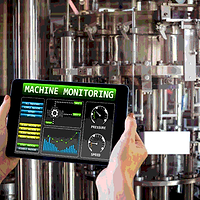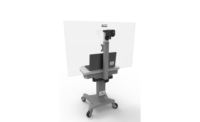The Use of Thermal Energy Technology to Improve Food Safety

It goes without say that it is of utmost importance that food is treated with special care throughout the food production, transportation, storage and sales processes. Of course human errors do occur, but legitimate attempts are being made to tweak technology to ensure that these errors occur as rarely as possible. Much tighter control is crucial, and a solution to resolving this issue may have been discovered in the shape of thermal imaging cameras. Thermal imaging technology is proving to be considerably useful in terms of strengthening controls on food safety standards in a cost- and time-effective way.
The convenience of a thermal imaging camera in the current digital age is astounding. To maximize ease, already owned equipment can be utilized alongside the thermal imaging technology. Analogue video outputs can be viewed on video monitors, and digital temperature data including MPEG4 video outputs can be routed to a computer via an ethernet cable. Thermal imaging cameras also have firmware and communication interfaces that enable their use in automated process control. This accessibility has led to many manufacturers selecting thermal imaging technology as their quality control method of choice.
Thermal imaging is primarily a quality assurance tool. Controlling and monitoring the quality and safety of cooked meat products is an excellent use of thermal imaging technology. A permanently stationed camera can record the temperature of chicken, for example, as it exits the conveyor oven. The cameras are small, easy to use and can be positioned almost anywhere. Furthermore, thermal imaging cameras used for this purpose can provide automated noncontact temperature measurements and perform inspections. They employ versatile technology, and the latest hand-held devices are increasingly affordable. The primary benefit is that all tests can be performed quickly and without any contact with the equipment, minimising disruption to production.
More specifically, the function of thermal imaging cameras in food processing has progressed for applications, such as:
• Oven-baked goods
• Microwave-cooked meats
• Microwave drying of parboiled rice and other grains
• Inspecting ovens for the sufficient temperature
• Proper filling of frozen meal package compartments
• Checking reliability of cellophane seals over microwave meals (using pattern-recognition software to examine the proper filling of food tray compartments; a related application is automated 100% inspection of the heat-sealed cellophane cover over finished microwave meals)
• Monitoring refrigerator and freezer compartments
From a production perspective, facilities managers in warehouses have become familiar with the benefits of using thermal imaging in their preventive maintenance regimens associated with the equipment. Through accurate detection facilities, the technology enables the appropriate maintenance to be carried out before complete breakdown occurs; as a result, it reduces equipment downtime and minimizes the associated impact on profits. Maintenance downtime costs almost every production line at least 5 percent of its productive capacity, and many lose up to 20 percent. Maximizing efficiency and minimising downtime is a clear hurdle faced by any production team.
Thermal imaging cameras can also act as an environmentally friendly way to improve food safety while simultaneously working to limit the current rate of energy consumption. The food and drink industry is the 4th highest industrial energy user in the UK.[1] In 2010, it consumed nearly 37 TWh (enough energy to power 125,000 homes for almost 15 years) and emitted around 11 million tons of carbon dioxide into the atmosphere.[1] Thermal imaging technology can attempt to reduce these figures drastically.
No matter the warehouse, or individual facility’s budget and production quota, the quality of food and food safety should remain at the forefront of every company’s policy. Thermal imaging technology is increasingly becoming the answer to consistently upholding this policy proficiently.
Chloe Hashemi is a food industry consultant.
Reference
1. www.carbontrust.com/media/39212/ctv004_food_and_drink_processing.pdf.
>
Looking for a reprint of this article?
From high-res PDFs to custom plaques, order your copy today!








